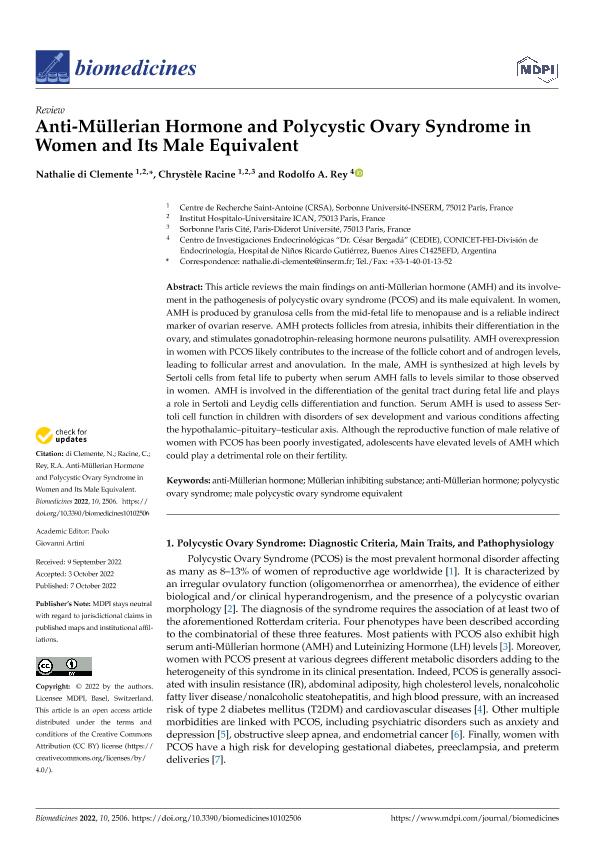Artículo
Anti-Müllerian Hormone and Polycystic Ovary Syndrome in Women and Its Male Equivalent
Fecha de publicación:
10/2022
Editorial:
MDPI
Revista:
Biomedicines
ISSN:
2227-9059
Idioma:
Inglés
Tipo de recurso:
Artículo publicado
Clasificación temática:
Resumen
This article reviews the main findings on anti-Müllerian hormone (AMH) and its involvement in the pathogenesis of polycystic ovary syndrome (PCOS) and its male equivalent. In women, AMH is produced by granulosa cells from the mid-fetal life to menopause and is a reliable indirect marker of ovarian reserve. AMH protects follicles from atresia, inhibits their differentiation in the ovary, and stimulates gonadotrophin-releasing hormone neurons pulsatility. AMH overexpression in women with PCOS likely contributes to the increase of the follicle cohort and of androgen levels, leading to follicular arrest and anovulation. In the male, AMH is synthesized at high levels by Sertoli cells from fetal life to puberty when serum AMH falls to levels similar to those observed in women. AMH is involved in the differentiation of the genital tract during fetal life and plays a role in Sertoli and Leydig cells differentiation and function. Serum AMH is used to assess Sertoli cell function in children with disorders of sex development and various conditions affecting the hypothalamic–pituitary–testicular axis. Although the reproductive function of male relative of women with PCOS has been poorly investigated, adolescents have elevated levels of AMH which could play a detrimental role on their fertility.
Archivos asociados
Licencia
Identificadores
Colecciones
Articulos(CEDIE)
Articulos de CENTRO DE INVESTIGACIONES ENDOCRINOLOGICAS "DR. CESAR BERGADA"
Articulos de CENTRO DE INVESTIGACIONES ENDOCRINOLOGICAS "DR. CESAR BERGADA"
Citación
di Clemente, Nathalie; Racine, Chrystèle; Rey, Rodolfo Alberto; Anti-Müllerian Hormone and Polycystic Ovary Syndrome in Women and Its Male Equivalent; MDPI; Biomedicines; 10; 10; 10-2022; 1-12
Compartir
Altmétricas




